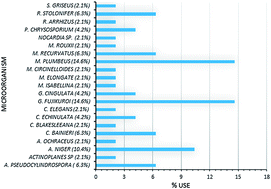Biotransformation of diterpenes
Abstract
Diterpenes are a versatile group of biologically active ingredients present in several phytoextracts. Structural modification of the diterpenes to enhance their pharmaceutical relevance can be efficiently carried out by the application of biotransformational processes using microorganisms or isolated enzymes. Over the past years, special attention has been paid to the biotransformation of diterpenes due to the fact that biocatalysts allow the production of enantiomerically pure compounds using mild and environmentally friendly processes. A wide range of microorganisms have been assessed for these biotransformations and have produced encouraging results, as discussed in this review. This report reviews reactions mediated by fungi, published between 2000 and 2013.


 Please wait while we load your content...
Please wait while we load your content...